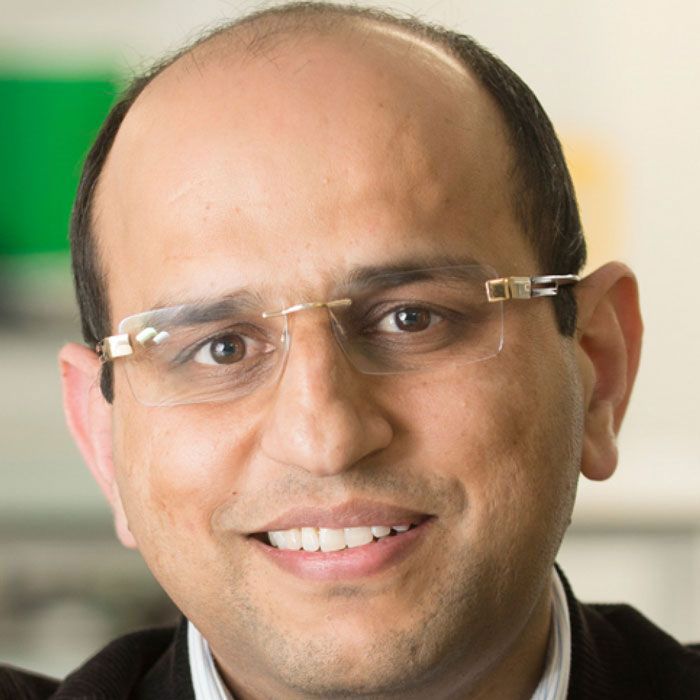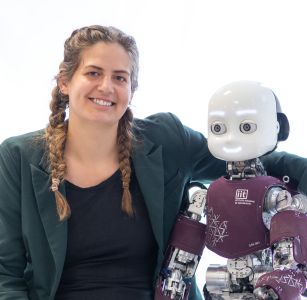Abstract submission open until June 18th!
General
Biological touch evolved to capture the properties of the surroundings, build a robust perception of the real world and take appropriate actions. As such, development of artificial tactile systems has been inspired by biology. However, towards their effective deployment, there is the need to explore unconventional substrates and computing strategies that can efficiently function on edge devices.
This workshop aims to foster the cross-fertilisation between researchers in neuroscience, neuromorphic engineering, flexible, printed and large area electronics, robotics, and prosthetics. The discussions will cover computational models of tactile sensing and processing, tools for understanding tactile neural representation, design of neuromorphic hardware for distributed sensing, encoding, and computing, and their application to real-world scenarios. The workshop focuses on technologies necessary to advance the research from tactile sensors to touch perception. To offer an opportunity to exchange knowledge, share ideas, and network, young researchers are encouraged to submit abstracts for poster sessions.
Topics
Neuromorphic technology for Transitioning from sensors to perceptual mechanisms
- Computational models of biological touch and tools for analysing the neural code related to touch sensing and perception
- Synergies and differences between neuromorphic approaches for different sensory modalities (vision, haptics, auditory, olfaction)
- Neuromorphic hardware for distributed computing and communication, from circuits to systems design and fabrication
- Tactile sensing and processing neuromorphic circuits design on flexible and unconventional substrates
Talks
Neuromorphic Twins for Bioelectronic Medicine
Bioelectronic medicine treats chronic diseases by sensing, processing, and modulating the electronic signals produced in the nervous system. While electronic circuits have been used for several years in this domain, the progress in microelectronic technology is now allowing increasingly accurate and targeted solutions for therapeutic benefits. To fully exploit this approach it is crucial to understand what aspects of the nerve signals are important, what is the effect of the stimulation, and what circuit designs can best achieve the desired result. Neuromorphic electronic circuits represent a promising design style for achieving this goal: their ultra-low power characteristics and biologically plausible time constants make them the ideal candidate for building optimal interfaces to real neural processing systems, enabling real-time closed-loop interactions with the biological tissue. Here I will highlight the main features of neuromorphic circuits that are ideally suited for interfacing with the nervous system and show how they can be used to build closed-loop hybrid artificial and biological neural processing systems, also showing examples of applications that follow this approach.

Elisa Donati
Dr. Elisa Donati received B.Sc., and M.Sc. degrees in biomedical engineering from the University of Pisa, Pisa, Italy, and the Ph.D. degree in biorobotics from the Sant’Anna School of Advanced Studies, Pisa, Italy. She is currently a Senior Scientist with the Institute of Neuroinformatics, University of Zurich and ETHZ where she is training as a Neuromorphic Engineer. She is also Junior Group Leader at the Neuroscience Center Zurich in the Computational and Modeling and Motor System Group. Her research interests include how to interface neurorobotics and neuromorphic engineering for building smart and wearable biomedical devices. In particular, she is interested in designing VLSI systems for prosthetic devices and upper limb neuroprosthesis. She is investigating how to process physiological data to extract features to produce stimulation or motor commands by using hardware implementation of spiking neural networks. She is a TC member of the Neural Systems and Applications of the Circuit and system society and the Biomedical Circuit and system society. Elisa was a coordinator of the Coordination and Action Project NEUROTECH (EU-H2020) aimed to build a community around neuromorphic technologies in Europe.
Towards Flexible, Printable Neuromorphic Perception for Soft Robotics
Human-like, next generation soft-robotics manipulators will require all of the following: (1) physically soft and flexible, (2) multi-functional sensing (e.g. pressure, temperature, etc.), (3) fabrication integrated into the structure (instead of separately fabricated sensors and structures which are then manually integrated), (4) with cognition (understanding) of the sensing data.
We will present the progress of our efforts to accomplish all of that. We show the use of electrically active polymeric materials, used to fabricate physically soft and flexible pressure and temperature sensors, fabricated using additive manufacturing (so-called 3D printing) techniques. The sensing-to-perception is accomplished via biologically inspired neuromorphic data processing. Our current efforts concentrate on integration of all of the aforementioned in soft finger-like manipulators intended to use in soft robotics.

Robert Nawrocki
Dr. Robert Nawrocki is an Assistant Professor in the School of Engineering Technology (SoET) at Purdue University. His current research interests include physically flexible organic electronics with the application in biopotential monitoring and soft robotics, as well as neuromorphic systems, smart (meta) materials and neuroscience. His research highlights include fabrication of world’s thinnest, sub 300 nm thin, organic electronics skin, fit with organic transistors and tactile sensors, and polymer neuromorphic circuitry, a biologically inspired “brain”, implemented with organic transistors and organic memristors, capable of simple pattern recognition. He is a recipient of the 2021 Office of Naval Research, Young Investigator Award and the 2021 Ralph W. and Grace M. Showalter Research Trust Award.
Neuromorphic Control
Motivated by the growing availability of event-based sensors and event-based actuators, we ask the question of how to close the loop from events to events. We propose to address those design questions through a mixed-feedback methodological framework inspired from the architecture of biophysical neural circuits. This architecture suggests that much of the classical theory of feedback control can be leveraged to designing event-based controllers that combine the reliability of the digital with the tuneability of the analog.

Rodolphe Sepulchre
Rodolphe Sepulchre is professor of engineering at the KU Leuven (Belgium) and at the University of Cambridge (UK). He is a fellow of IFAC (2020), IEEE (2009), and SIAM (2015). He received the IEEE CSS Antonio Ruberti Young Researcher Prize in 2008 and the IEEE CSS George S. Axelby Outstanding Paper Award in 2020. He was elected at the Royal Academy of Belgium in 2013. He is Editor-in-Chief of the IEEE Control Systems Magazine. He co-authored the monographs Constructive Nonlinear Control (1997, with M. Jankovic and P. Kokotovic) and Optimization on Matrix Manifolds (2008, with P.-A. Absil and R. Mahony). His current research focuses on neuromorphic control. It is funded by the ERC advanced grant SpikyControl (2023-2028).
Biomimetic artificial touch for brain-controlled bionic hands
Somatosensory feedback from the hand is essential to support object interactions as evidenced by the deficits observed when it absent. With this in mind, we are developing approaches to restore tactile feedback for brain-controlled bionic hands via intracortical microstimulation (ICMS) delivered to somatosensory cortex (S1). To this end, we build sensory encoding algorithms that convert the output of sensors on the hand into patterns of ICMS delivered to S1. We show that biomimetic algorithms, which attempt to reproduce natural patterns of S1 activity, evoke sensations that are more natural, more informative about interaction forces, and less disruptive to decoders of intended movements from signals in motor cortex.

Sliman Bensmaia
Sliman Bensmaia is the James and Karen Frank Family Professor in the Department of Organismal Biology and Anatomy and in the Committee on Computational Neuroscience. The main objective of his research is to discover how sensory information is encoded in the activity of neurons along the somatosensory neuraxis, spanning the senses of touch and proprioception, in primates. To this end, his team records neuronal responses, measures the elicited percepts, and develops mathematical models to link neuronal representations to behavior. Bensmaia's team is also working towards restoring the sense of touch in bionic hands for amputees, through electrical interfaces with the nerves, or for people with tetraplegia, through electrical interfaces with the peripheral and central nervous systems. A widely published author, Bensmaia has spoken at dozens of invited talks and symposia and holds five patents. He is a member of the Society for Neuroscience, the American Physiological Society, and the Institute for Electrical and Electronics Engineers.
Sliman Bensmaia
Organization Commitee

Chiara Bartolozzi
Chiara Bartolozzi is a Researcher at the Italian Institute of Technology. She is currently leading the Neuromorphic Systems and Interfaces group, with the aim of applying the "neuromorphic" engineering approach to the design of robotic platforms as enabling technology towards the design of autonomous machines. Chiara is project coordinator for Neutouch, an MSCA Innovative Training Network.

Ravinder Dahiya

Ella Janotte
